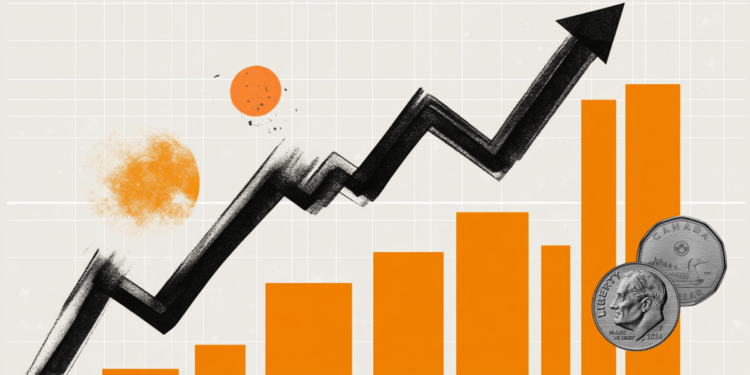Since the confirmation of the first case of coronavirus in Brazil, in February 2020, the country has already faced the most diverse scenarios in facing the pandemic. In recent months, driven by the emergence of the Ômicron variant, cases of Covid-19 have soared.
According to data from the Ministry of Health, on February 3, 2022, the country reached the highest number of new infections with 298,408 in 24 hours. However, unlike what Brazil saw at the beginning of 2021, mainly due to vaccination, the death rate did not increase in the same proportion as the cases soared.
At the time, some experts estimated that the peak of Ômicron would happen until the second week of February and after that, the country would see a drop in cases.
The epidemiologist and professor at the Federal University of Espírito Santo (UFES), Ethel Maciel, was one of them. She told CNN in January that Brazil was following data from other countries that do a lot of testing and that she believed we had not yet reached our peak.
Now, however, there is much speculation whether the country has already passed the peak of the pandemic and what the next SARS-CoV-2 scenarios should be as vaccine coverage advances.
To help compare cases with deaths, see the charts below.
The first shows the curve of infections in the country since the beginning of 2021:
The image below shows the evolution of deaths by Covid-19 a year ago.
For Ester Sabino, immunologist and former director of the Institute of Tropical Medicine, who led the sequencing of the coronavirus genome, the peak of Ômicron cases may have passed. “Everything indicates that the trend is, in the next few days, we will see a drop in the number of cases – which is already happening – and also in deaths”, she told the CNN.
The same is defended by infectologist Fernando Bellissimo-Rodrigues, from the Epidemiological Surveillance Nucleus of the Hospital das Clínicas, Faculty of Medicine of Ribeirão Preto (FMRP). he told the CNN that “maybe the worst is over, but it takes a while to reflect in the number of deaths.”
Julio Croda, infectologist and researcher at Fiocruz, told CNN that we have already passed the peak of the coronavirus.
“We’ve already been a week, clearly, with a drop in the number of cases. We’ve had worse times and this behavior is similar to what happens in other countries: four to six weeks up and four to six weeks down,” he says.
Bellissimo-Rodrigues explains that in epidemiology there is a phenomenon called ‘exhaustion of susceptibles’ and that is why the number of infections should continue to fall. “As a large portion of the population has already been infected, and another large portion is immunized, especially with the booster dose, the virus begins to have difficulty finding a person to infect”, she explained.
However, all experts consulted by the CNN for this report state that the conditions of a drop in the number of daily cases must be maintained, if, and only if, the world advances in vaccination to avoid the emergence of new variants.
Emergence of new variants
In early 2022, the Director-General of the World Health Organization (WHO), Tedros Adhanom, said that “the pandemic is far from over, and with the rapid growth of Omicron globally, new variants are bound to emerge”.
Alexandre Naime Barbosa, vice president of the Brazilian Society of Infectious Diseases (SBI) and professor at Unesp, told CNN that it is not impossible for new variants to emerge.
“But, probably, these new variants will not have the same degree of lethality as other strains – thanks to the advance in vaccination”, he explained.
Sabino points out that there is a chance that new variants will emerge. “We don’t really understand where Ômicron came from and, because we don’t understand it well, we don’t know what the chance is of it happening again”, he says.
Bellissimo-Rodrigues comments that there is always a chance for a new strain to change the game.
“In November of last year, I would have said that the trend would be towards an endemic disease. But he came to Omicron and surprised us. And this is because there are pockets of locations with low vaccination coverage,” he comments.
The infectologist recalls regions in the world where the variants appeared. “Every time there is a place with low coverage and the virus gets there, it spreads easily and increases the likelihood of mutations. This happened in South Africa with Ômicron, in India with Delta, in Amazonas with Gama and in the UK with Alfa”, said Bellissimo-Rodrigues of FMRP.
The Omicron variant of the coronavirus was identified in November 2021. Since the strain’s classification as a variant of concern by the World Health Organization (WHO), different strains of the variant have been detected, including subvariants called BA.1, BA.1.1 , BA.2 and BA.3. The BA.2 strain has a large number of mutations that differ from those identified in the BA.1 strain.
At least 57 countries, including Brazil, have already sent genetic sequences from samples belonging to the subvariant to international databases. The weekly ratio of BA.2 to other Ômicron sequences has increased by more than 50% during the last six weeks in several countries.
According to the WHO, which constantly monitors the evolution of SARS-CoV-2, so far it has not been possible to establish how and where the subvariants of Ômicron originated and evolved.
Sabino said that BA.2 deserves attention. “It is growing and becoming the number one in South Africa,” he says.
Naime points out that the subvariant is already presenting itself as a variant of extreme concern because it shows itself with escape from monoclonal antibodies.
“The BA.2 subvariant is of extreme concern, which seemed to be less pathogenic, and at a second moment, it seems that it will have the ability to evade the neutralizing response of monoclonal antibodies”, he says.
Codra, from Fiocruz, highlights that even with a new subvariant, such as BA.2, the scenario of 2022 is different from that of 2021.
“As Ômicron infected many people, the combination of previous infection and vaccination generates an extremely high immunity that can protect the population to avoid hospitalization and deaths, even in the context of a new variant”, said the researcher.
Vaccination to control the peak of the virus
All researchers interviewed by the CNN highlight vaccination as the main way to control the virus.
The Ministry of Health points out that it is necessary to advance in vaccination in the country, especially with the booster dose.
Minister Marcelo Queiroga said at a press conference on Thursday (10) that “this is what will make the difference. Brazil has a coverage of around 30% of booster dose, a rate that we need to expand.”
According to a survey carried out by CNN Agency, until Thursday (17), 79.28% of the population in the country had already received the first dose, 71.05% the second dose and 26.80% the booster dose
The panel that monitors vaccination on the Health website has not reported an update on state vaccine data since January 28, 2022.
Naime says that people “unvaccinated end up having a very high individual risk of progression to severity and death.”
Sabino says the risk of unvaccinated people is that they are spreading the virus.
“The problem with unvaccinated people is that they keep the virus circulating and for people who are immunosuppressed or much older, who the vaccine doesn’t work as well, the unvaccinated are putting those individuals at risk because they keep the virus circulating. virus.”
For Bellissimo-Rodrigues, there is no need to make vaccination mandatory, however, “the individual right not to be vaccinated ends when the person presents a risk to collective health”, he says.
Sabino also highlights that it is very important that people take the booster dose. “So far, few people have taken it. In Brazil, we are still late with the third dose,” he said.
He further states that there must be “equity in vaccine distribution, both nationally and globally.”
“When Israel was on the third dose, they were surprised by the arrival of the Ômicron. It is necessary that the most developed countries begin to look and realize that a global problem requires an orderly global effort. What we can do nationally is to vaccinate ourselves, but in international relations, try to ensure that less developed countries have access to the vaccine”, says the infectious disease specialist.
Possible coronavirus scenarios
An article published in the scientific journal The Lancet, analyzes epidemiological scenarios around the world. According to the publication, Covid-19 will continue, but ‘the end of the pandemic is near’.
The analysis estimates that by March 2022, a large proportion of the world will have been infected with the Ômicron variant, and with continued increases in Covid-19 vaccination, the use in many countries of a booster dose and high levels of infection-acquired immunity, for some time the overall levels of immunity to SARS-CoV-2 should always be high.
However, the article points out that the health impacts of future transmission of SARS-CoV-2 will be minor due to extensive previous exposure to the virus, vaccines regularly adapted to new antigens or variants, the advent of antivirals, and the knowledge that more vulnerable can protect themselves during future waves when needed by wearing high quality masks and distancing.
For Ester Sabino, “the trend [da Covid] is to become an endemic disease, but everything depends on the emergence of new variants, or some variant that is resistant to the vaccine. This could cause us to have epidemic spikes again.”
Codra says that “Covid-19 is on the way to becoming an endemic disease because the lethality associated with the disease has reduced in recent months, something that was once 20 times greater than influenza and is now twice as high,” he said.
Lethality is a severity marker that indicates health service overload, hospitalization.
According to the Fiocruz researcher, “when there is a reduction in lethality, it brings less impact to the health service and, therefore, even if there is a significant increase in the number of cases, it does not generate an impact on health services”, he points out.
The infectologist indicates that this should occur when there is no need to use restrictive or protective measures.
“The disease tends to be endemic, with seasonal periods, where we will have an increase in cases, eventually hospitalization and deaths, but we will no longer experience what we experienced in the past, especially in Brazil, in the context of Gama with three or four thousand deaths daily” , highlights Julio Codra.
Naime points out that it is difficult to predict a long-term scenario, especially with the BA.2 variant.
“In the pandemic we learned that there is no crystal ball. We can only speak for the short term. We can say that in the next two months, the tendency is for there to be a drop in the number of cases, a drop in the number of hospitalizations. That’s if no variants appear. Now, if BA.2 starts to predominate, we could have problems in six, eight or 12 weeks, he says.
For Bellissimo-Rodrigues, two scenarios are likely: “Covid-19 could evolve into an endemic disease, causing seasonal outbreaks, or we could see a new strain — motivated by unvaccinated people,” he said.
“The scenario in the coming months should probably be calm, but it is very important that people take the third dose”, concludes Sabino.
Source: CNN Brasil







